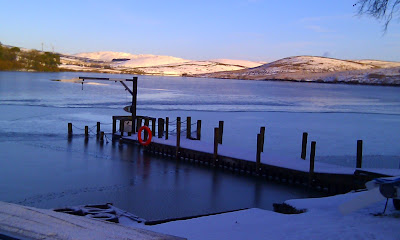I will add to this post, the most recent comment was made 14 January 2011.
I am using Android version 2.2 (software number 2.29.405.5)
Calendar.
- When on a month view, you swipe from left to right to move forward a month, and right to left to move back. When on a day view, it is the other way round.
- On a day view, it displays the date, but not the day of the week.
- When selecting which calendars to display the option is three clicks away (Menu > More> Calendars). It could easily be two clicks (Menu > New Event) is not needed as each screen has a "+" button, and could be one click, as Agenda and Month each have a title called "Calendar" which could be a button.
- Event details show the date, but not the day of the week.
- Events would be better to have a "Edit Event" button in the same way that contacts have an "Edit Contact" button.
Contacts (HTC People)
The best feature of the phone, being able to start typing a first name or last name and getting all the partial matches, is not available in the contacts, which is a shame. You have to scroll up and down, the option of typing (say) P to start viewing part way down just is not there. (Oh yes it is! Just hit the find button)- If the address is long, you cannot see the whole of it. it is cut short, so you cannot see the postcode, the part you most likely need to look up. Clicking on it does display the whole address, but only briefly, as it makes a Google map search. The best way of seeing the postcode is to select edit.
- It is a good feature to click on an address and see it on the map, but beware addresses with house names. My brother's house is called "Cornerstone" and instead of searching on the postcode, it searches instead for businesses called Cornerstone in the surrounding area.
- When looking at the list of contacts, it is not possible to see contact type, or which contact book they belong to, (with some reason, as it may be a composite of two linked records of different sources)
- When looking at an individual contacts, the contact type is shown, but immediately overwritten by the link icon if the contact is already linked, or has an non responded to link suggestion.
- When editing a contact, there is no indication of the contact type. Taking the last three points together, it is quite confusing.
Phone
- The call history shows name number date and time but not duration. Duration is available when viewing all calls made to a contact, but not calls made to all contacts by date.
- It is very easy to make inadvertent calls when viewing call history. Tap and hold will give you a choice of actions, but tap and hold for not long enough will start to ring, as will a gentle brush of the finger.
Entering Text
- The screen is very responsive, so that many keys are registered inadvertently. But then again, that is probably better than the alternative, plus you know when it has happened thanks to the vibrate while typing feature.
- The autocorrect feature is either off (it offers no corrections or auto-complete) or on, in which case it not only offers corrections, but automatically selects the highlighted one. So you type palmhouse, and you then have to select the option you typed, or you get the one offered; farmhouse.
- One of the most annoying things that can happen when the suggested words overlay the screen behind, is to miss hitting the suggested word and hit cancel instead. If this happens toward the end of entering the detail of an event, it all gets lost in an instant.



























